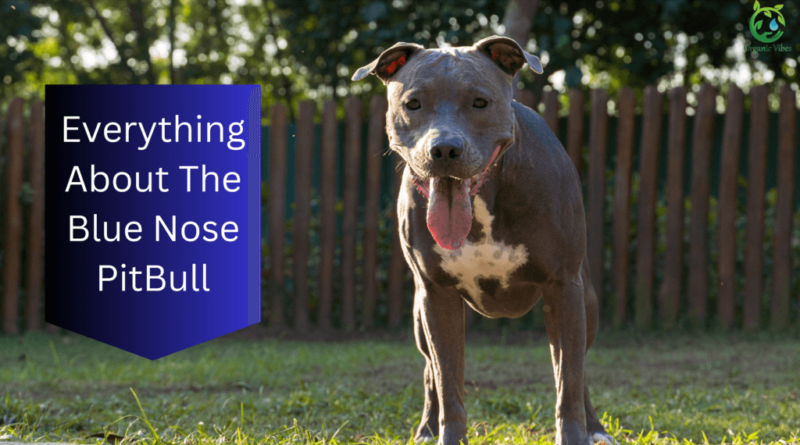Blue Nose Pitbull: Amazing Things to Know About
If you have ever encountered a blue-nose pitbull, you know that they are cheerful dogs, and the best part is that they come in a range of colors.
Blue-nosed pit bulls are a type of American pitbull dog with bluish-gray fur. One of the most famous blue-nosed pitbulls is Junior Millan. People recognize him for his “white socks” and because he belongs to Cesar Millan, known as the Dog Whisperer.
Despite the unfortunate history of American pitbulls in dogfighting, the negative connotations associated with this breed are gradually disappearing. Many people don’t realize that pitbulls are incredibly affectionate animals that love to play with anything in sight. Their bulky, muscular appearance belies a friendly, intelligent breed that, with proper training and socialization, can make a wonderful addition to any home.
If you’re curious about adopting a blue-nosed pitbull, the guide below contains all you need to know about the breed’s history, physical attributes, temperament, longevity, training, and more. We also cover the most frequently asked questions about blue-nose pitbull adoption and upkeep.
Continue reading to learn everything you should know about the blue-nosed pit bull.
Table of Contents
Important Statistics
- Among purebred American pit bull terriers, this coat coloration is extremely unusual.
- 18–21-inch height range, 30–60-pound weight
- Age range: 8–15 years
- Condensed, minimal-shedding coat.
- grayish “blue” in tone, especially around the eyes and nose.
- Dedicated, educated, and active in sports
- Excellent with kids
- Owners with previous success are ideal.
The Blue Nose Pitbull: What Is It?
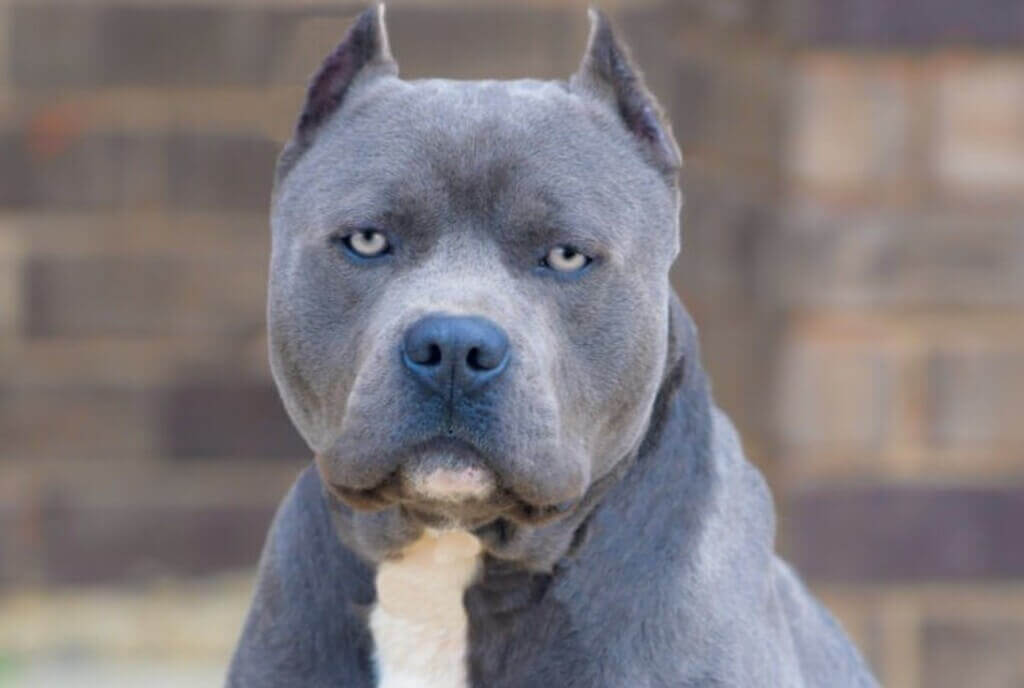
To the average observer, a blue-nosed pit bull is just another American pit bull terrier family member.
The American pit bull terrier family has more genetic diversity than the American Staffordshire terrier family.
Their signature “blue” color is more accurately described as a purple-tinged gray. They also have blue eyes and a nose of the same pale gray as their fur. White spots are possible on the head, chest, and paws.
Blue pups are extremely unusual since they are the product of a recessive gene that causes their distinctive coloring.
The gene responsible for the dog’s unique appearance and moniker is eumelanin, a diluted form that affects the coat, eyes, and nose.
In addition to influencing coat color, these genes can lead to problems like early hair loss and a compromised immune system in dogs.
Where Did the Blue-Nosed Pitbull Come From?
American pit bull terriers can trace their ancestry back to Victorian-era England. Dog breeders bred bulldogs and English terriers together to develop the famous pitbull breed, which was highly sought-after for its imposing physique and predominantly utilized in the hunting industry.
First imported from the UK, where they are known as the Staffordshire bull terrier, pit bulls have found a home on farms and in hunting parties. The American pit bull terrier term was given to these dogs when they proved useful as companions and livestock guardians.
How Do Pitbulls with a Blue Nose Look?
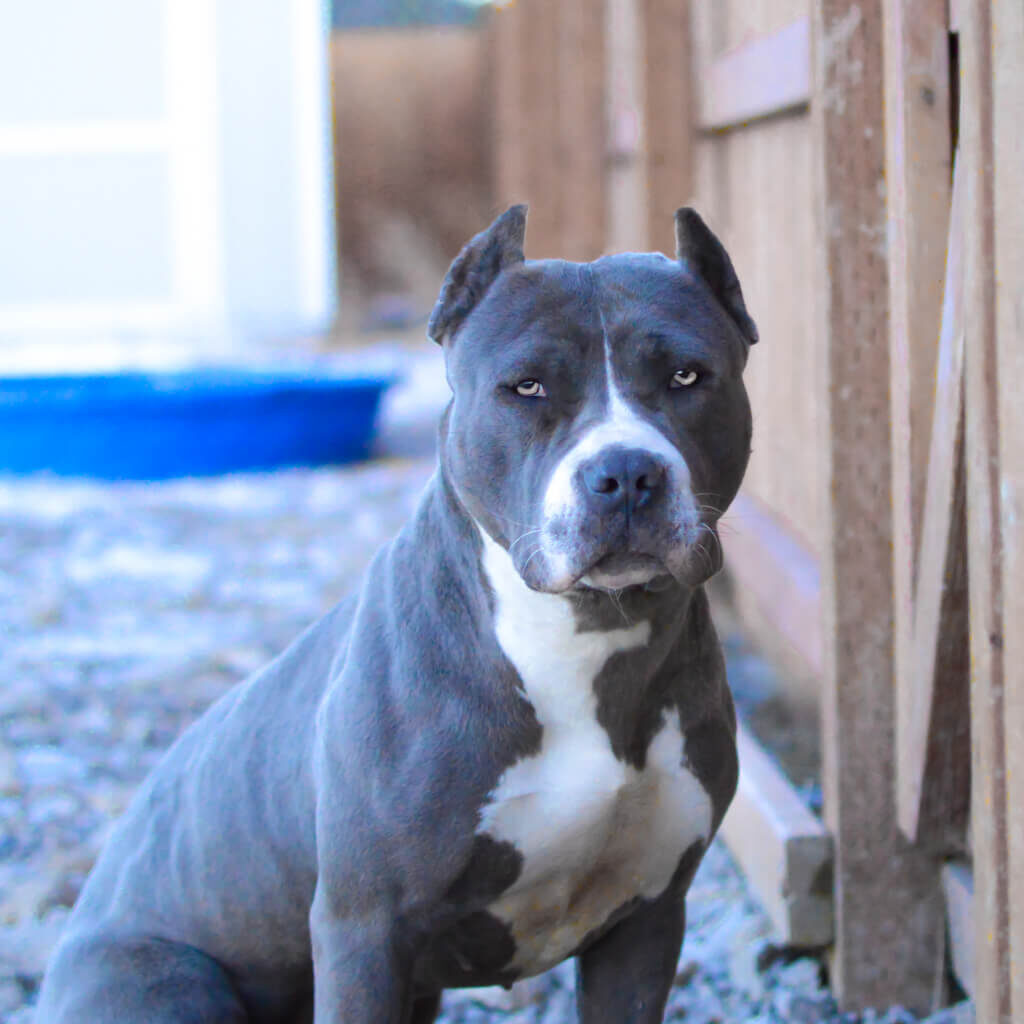
The only distinguishing feature of the blue-nosed pitbull is its bluish-gray coat, which is identical to other pitbull terriers. Although the coat is often uniform in color, brindle and tiger stripe patterns are also possible. It’s not uncommon for blue-nosed people to have white spots on their chests, feet, and around their eyes.
Due to their athletic heritage, pitbulls typically have a stocky build. They have broad, square faces with short snouts. These canines’ bluish-gray noses result from a recessive gene that regulates skin pigmentation. Later, we discuss the common health problems that arise from this inherited abnormality.
A Blue-Nosed Pitbull Is About How Big?
The size and build of a blue-nosed pitbull are largely determined by its genetic parents. Conversely, these canines rarely exceed 60 pounds in weight and 18–21 inches in height. Female dogs, like most others, tend to be smaller than their male counterparts.
What Kind of Coat Does a Blue-Nosed Pit Bull Have?
The short, slick coat of the blue-nosed pitbull sets it apart. Their coats aren’t as fluffy as those of other breeds, so they’re easy to care for and have a pleasant texture. Even though they constantly shed, blue-nosed pitbulls only need to be brushed occasionally. This is great news if your dog hates the brush!
Attributes of a Blue-Nosed Pitbull
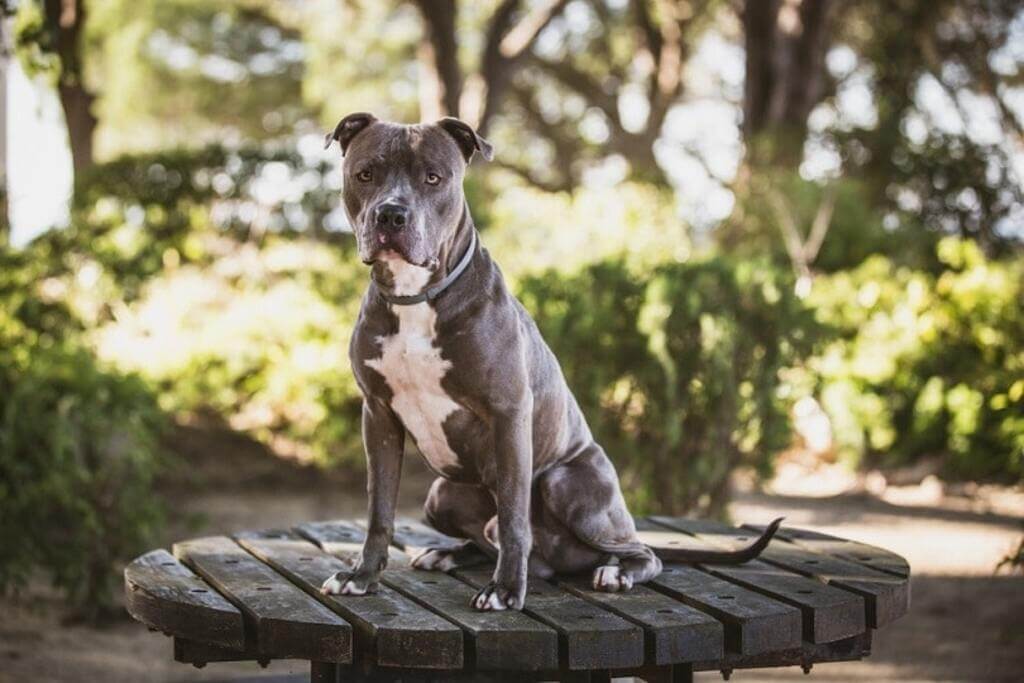
Despite their history of being used for fighting and protection, pit bulls make wonderful companion dogs and even better companions for the home. They are extraordinarily brave people who will risk everything to protect those they love.
Pit bulls have strong personalities but are also highly trainable due to their intelligence and eagerness to please. They do best with confident, experienced dog owners who can show their pets who’s boss.
Pit bulls are not the kind of dog that can be regularly left alone for long periods; they require much attention and affection to thrive. Frustration, in turn, often takes the form of harmful actions.
As diggers and chewers, you can only imagine the havoc their powerful bodies can wreak. Toys that can withstand their powerful jaws should be purchased.
They have strong ties to their community and look out for one another, especially the young. Although they have a natural affinity for and understanding of youngsters, they should never be trusted alone with young children.
Because of their bulk, even seemingly safe activities like playing might result in serious injuries.
They desire cuddles just as much despite their massive frames! And will gladly join you on the sofa for a cuddle session if you invite them.
They are devoted to their human companions but may show hostility or territoriality toward other animals. This propensity can be mitigated by adequate socialization beginning at an early age.
They won’t attack, but they might be apprehensive of other animals. A pit bull is not the type of dog to initiate physical conflict, but it will not back down from a confrontation.
Temperament and Personality
If we talk about the temperament of these dogs, they are friendly and reliable. They are loving and playful, and thus they cope well with their family members.
They are very intelligent, and thus, you can teach them what you want. Use consistent training sessions. Use calm, assertive commands, and start when they are young. It will be easy to train them when they are young.
Adaptability
Apartment living or areas with large tracts of land are suitable for blue-nosed pitbulls. Simply be prepared to use them appropriately. They enjoy being with you the most; thus, they don’t mind being in a tiny or huge place.
Exercise
The blue-nosed pitbull is energetic and active; thus, you can expect them to walk for an hour easily. They love playing games.
A blue-nosed Pitbull makes the ideal fitness companion, so you can take them along when you go jogging, running, walking, or trekking. You may prevent your blue nose pit from being bored and acting out by giving it enough daily exercise.
If they do not exercise properly, there may be behavioral issues. They may develop aggression or display unwanted behaviors, like emotional outbursts.
Grooming
Although they have a short, single-layer blue coat, blue-nosed Pitbulls shed frequently. Some shed more than others, but before spring and winter, they usually do. Moreover, hormonal changes and pregnancy might cause shedding. The Blue Nose Pitbull, however, requires very little maintenance.
To distribute the body’s natural oil evenly, daily brushing toward hair growth will keep their coats healthy.
You need to trim their nails once a month. It is best to get your dog’s toenails manicured by your veterinarian because they include blood vessels and nerves.
Pay attention to their ears and get them checked once a week if possible. A vet will professionally clean the ears of your pitbull.
Apart from all these things, make sure to keep an eye on their face and eyes to check for infections.
Also Read: Canadian Marble Fox: Everything About Canadian Marble Fox As Pet
Common Health Issues
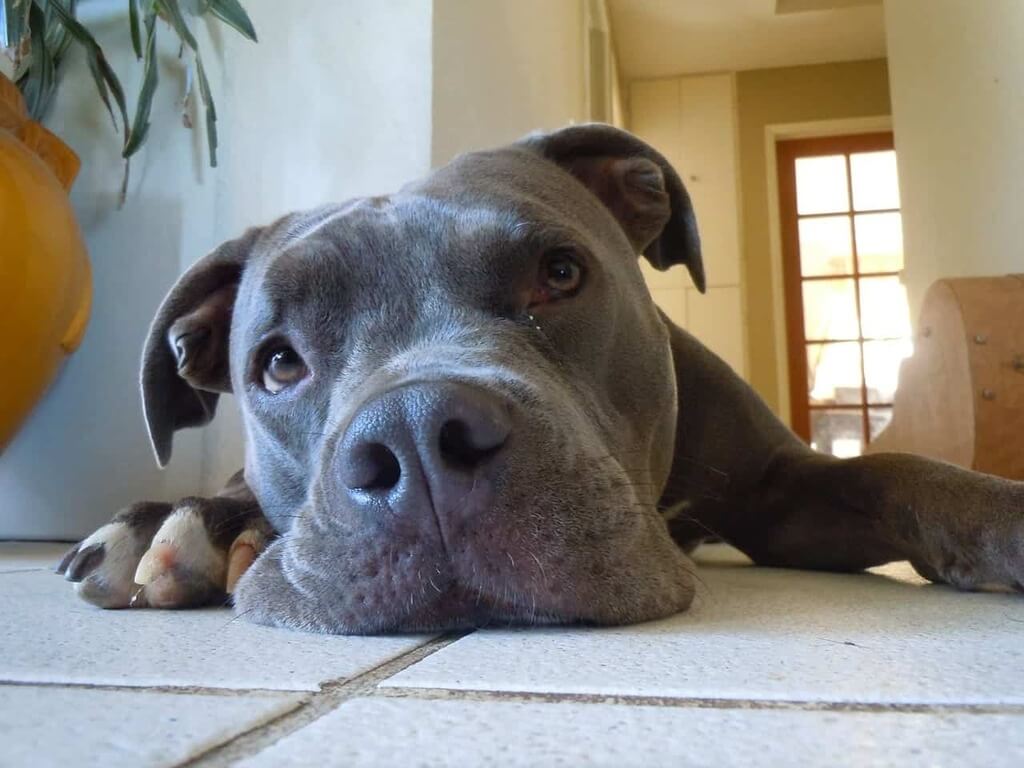
Blue-nosed pitbulls are more likely to have health issues than normal pitbulls because their genetic makeup is recessive.
Blue-nosed pit bulls are prone to allergies, alopecia, immune disorders, hypothyroidism, deafness, and hip dysplasia. The blue-nosed pitbull puppy is also prone to a heart disease known as aortic stenosis, which might be congenital or happen later in life.
Blue-nosed pitbulls are at a high risk of ear infections. Whenever you see excessive shaking in your dog, understand that your dog has an ear infection. Medication should be used to treat ear infections. From your side, you need to ensure the ears are properly cleaned and maintained.
This list outlines the common health problems that blue-nosed pitbulls face:
- Skin conditions
- Allergies
- Alopecia
- Immune disorders
- Hypothyroidism
- Deafness
- Hip dysplasia
- Ear Infection
- Heart Disease
- Blue Nose Pitbull Food and Diet
- Blue-Nose Pitbull
One needs to pay proper attention to the food and diet of the blue-nosed pitbull.
The medium-sized canine variety will require 30 calories for every pound of body weight. Male Blue-Nosed Pitbulls are regularly larger than females and can weigh between 30 and 60 pounds.
As with other dogs, the Blue Nose Pitbull should eat a balanced diet. For this dog, dry kibble is an ideal food.
Frequency of Feeding Blue-Nosed Pitbulls:
- Less than four months: four meals a day
- Puppies between four and six months: three meals a day
- Puppies over six months: 2 to 3 meals daily.
- Take it slow when switching from one cuisine to another.
How do I use ratios and timing for this?
Consult your veterinarian. A full-grown blue-nosed pitbull will require a different diet than those still puppies, so be aware of your dog’s age.
Taking Home a New Blue-Nosed Pitbull Pup
If your pit bull has a colored nose, you’ll have to spend more. The total will be higher than the going rate for a pit bull.
A pit bull with a blue nose is available for purchase. A blue-nosed pit bull can cost anywhere from $1,000 to $3,000, with the highest demand in the United States.
Pick a reputable and responsible breeder if you’re looking for a blue-nosed pitbull puppy for sale. Untrustworthy breeders may engage in inbreeding, which can cause serious health problems in the offspring.
Finding a blue-nosed pitbull in a shelter is one option if you want one but can’t afford to buy one new.
Blue Nose Pitbull: Some Fascinating Facts
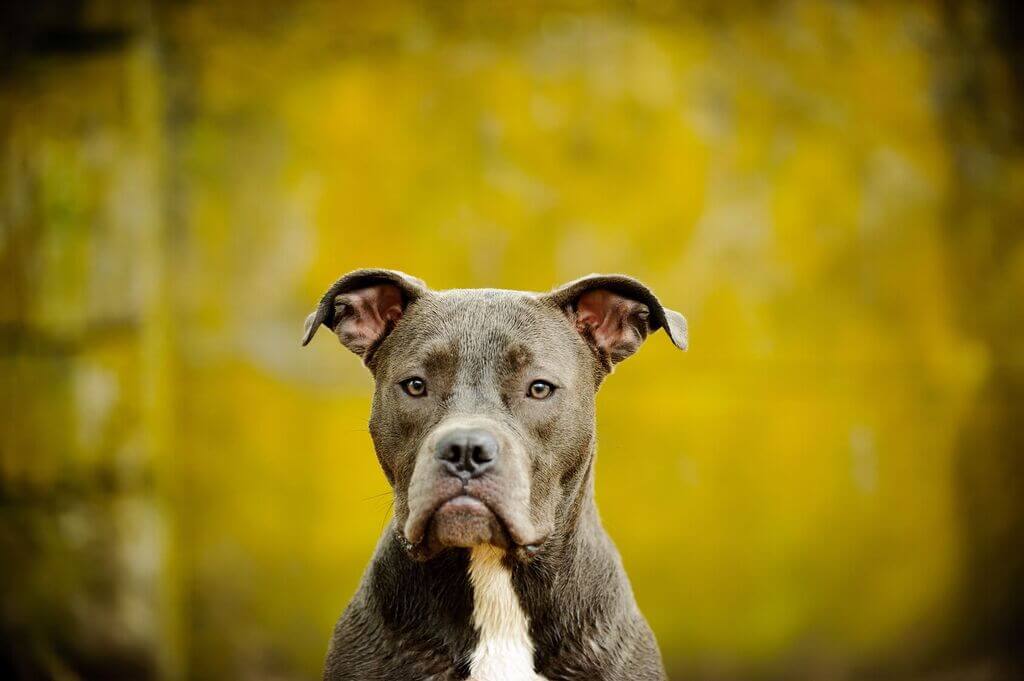
The first is that pit bulls are not a distinct breed.
The recessive gene responsible for a blue nose has no effect on the pitbull breed.
- When an American pit bull terrier has a recessive blue nose, it is a blue-nose pitbull.
They are also quite athletic.
These canines are full of energy and always looking for something to do. These canines will not confine themselves to a single room.
They take great pleasure in sports, physical fitness, and other forms of active living. If you want to adopt or buy a dog of this breed, you’ll need to ensure it gets plenty of exercise and time to run around and have fun.
A Poorly Understood Type
Blue-nosed Pitbulls, like the rest of the Pitbull breed, have had a rough go of it when it comes to public perception. It’s important to evaluate the character and demeanor of these dogs as unique individuals, independent of preconceived notions or hearsay.
It Depends; There Are Gray Areas, and There Aren’t
Their distinctive gray coats, along with their unique blue muzzles, make blue-nosed pitbulls easily recognizable. Just like having a blue nose, being gray is a recessive characteristic. That means it’s not a given, either.
They Have a Lot of Feelings
The blue-nosed pit bull may be a large dog but it has a great heart. This makes them suitable companion animals.
FAQs
Are pit bulls with blue noses more likely to attack?
Science doesn’t support the idea that blue-nosed pitbulls are more aggressive than other pitbulls or dogs. A dog’s personality depends on its genes, upbringing, and training rather than the color of its nose.
What is so special about blue-nosed pitbulls?
The greyish-blue color of a pitbull’s nose leather is what the term “blue nose” refers to. Some people who like pitbulls like this unique coloring, and blue-nosed pitbulls are popular show dogs and pets.
How rare are blue-nose pit bulls?
How rare a blue-nosed pitbull is depends on the place and the breeding line. Some breeders intentionally do it to get pigs with blue noses, while others focus on different traits or tones.
How much does it cost to buy a blue-nosed Pitbull?
The price of a blue-nosed pitbull depends on several things, such as the breeder’s reputation, the dog’s ancestry, and its location. Most of the time, a blue-nosed pitbull will cost you between $1,000 and $3,000.
Is a blue-nosed pit bull a mean person?
Pitbulls with blue eyes are not inherently stronger or more “aggressive” than other types of pitbulls or dogs. Factors such as genetics, quality of training, and degree of socialization play a significant role in determining a pitbull’s behavior.
What is the rarest color of a pit bull?
How rare a pitbull’s color is depends on its breeding line and where it lives. Some colors of pitbulls, like blue or champagne, aren’t as popular as others, like black or brown. But there is no one “rarest” pitbull color because it depends on the owner and the dog’s bloodline.
Final Verdict
Blue-nosed pitbulls are stunning canines, but their reputation for aggression makes people wary of adopting them.
Dog fighters have used and tortured pit bulls, but these actions do not make pit bulls innately vicious. They’re safe, loving, and affectionate when well cared for.
When adopting a blue-nosed pitbull, prepare for street fame.
Do you know blue-nosed pitbulls?
Leave comments below. Keep Following The Organic Vibes for more amazing guides on Dogs.

